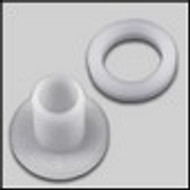What Are Spacers Fasteners?
Jul 22nd 2024
Spacers, often referred to as spacer fasteners, are components used in various applications to create a specific distance or gap between two objects or surfaces. They are designed to maintain separation, alignment, or clearance between parts, and they come in various shapes and materials. Here are some key aspects of spacer fasteners:
- Purpose: Spacers serve several purposes, including:
- Alignment: They ensure that parts or components are correctly positioned relative to each other.
- Insulation: They can electrically insulate parts to prevent contact or interference.
- Vibration Damping: Spacers can help absorb and reduce vibrations.
- Load Distribution: They distribute loads and forces evenly between parts.
- Clearance: Spacers create a specific gap or clearance between surfaces.
- Types of Spacers:
- Round Spacers: These cylindrical spacers have a uniform diameter and are used for various applications, including electrical and mechanical.
- Hex Spacers: Hexagonal spacers have a hexagonal shape, which makes them easy to grip and turn with a wrench or a pair of pliers. They are often used in electronics and machinery.
- Standoffs: Standoffs are similar to spacers but have both male and female threads on either end. They are commonly used in electronics for mounting circuit boards and creating space for components.
- Bushings: Bushings are cylindrical spacers with a central hole. They are often used as bearings or to reduce friction between moving parts.
- Tubular Spacers: Tubular spacers are cylindrical with a hole through the center. They are used for a wide range of applications where separation or insulation is needed.
- Materials:
Spacers can be made from various materials, including:
- Metal: Stainless steel, aluminum, brass, and steel are common metals used for spacers due to their strength and durability.
- Plastic: Plastic spacers are lightweight and offer electrical insulation properties. Common plastics include nylon, polyethylene, and PVC.
- Ceramic: Ceramic spacers are used in high-temperature and high-voltage applications due to their excellent insulating properties.
- Fastening Methods:
Spacers can be fastened in place using various methods, including screws, bolts, nuts, or adhesive. Standoffs, for example, are often secured with screws on one end and nuts on the other, creating a secure and adjustable connection.
Spacers are a fundamental component in many industries, including electronics, aerospace, automotive, construction, and manufacturing. They play a crucial role in ensuring proper assembly, alignment, and functionality of various mechanical and electrical systems.

